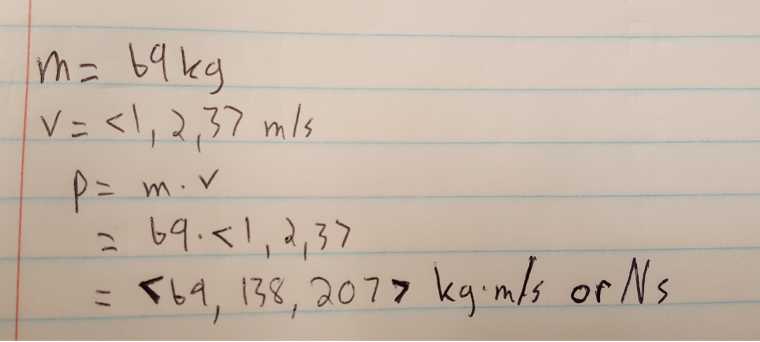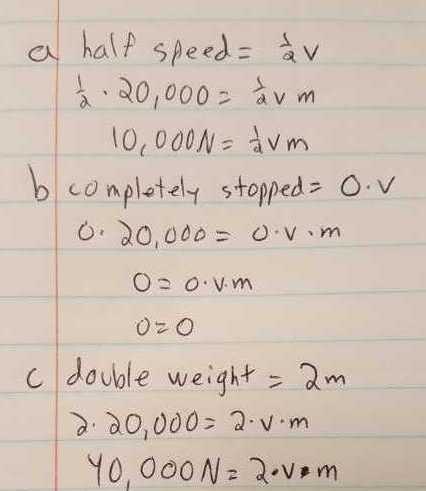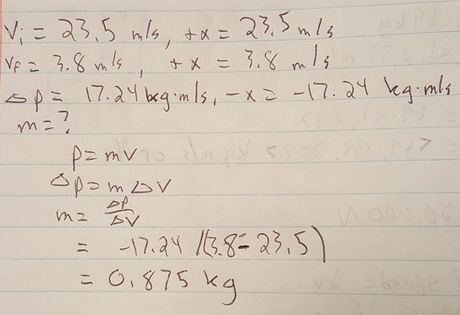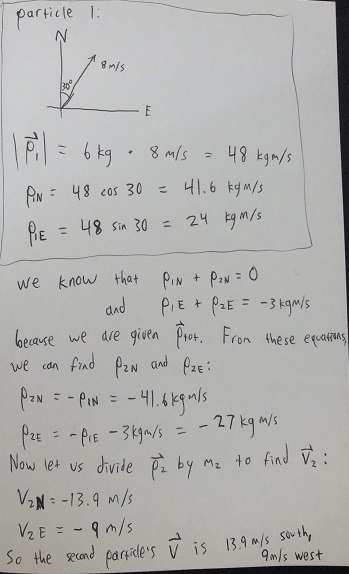Linear Momentum: Difference between revisions
| Line 28: | Line 28: | ||
When a force is applied to a particle, its momentum evolves over time according to Newton's second law. For more information, see [[Newton's Second Law: the Momentum Principle]]. | When a force is applied to a particle, its momentum evolves over time according to Newton's second law. For more information, see [[Newton's Second Law: the Momentum Principle]]. | ||
When an impulse is applied to a particle, its momentum changes in a specific way: the change in momentum <math>\Delta\vec{p}</math> is equal to the impulse <math>\vec{ | When an impulse is applied to a particle, its momentum changes in a specific way: the change in momentum <math>\Delta\vec{p}</math> is equal to the impulse <math>\vec{J}</math>. This is a consequence of the Momentum Principle. For more information, see [[Impulse and Momentum]]. | ||
When the net external force on a system of particles is 0, the system's momentum is conserved (that is, constant over time) even if the particles interact with each other (exert internal forces on each other). For more information, see [[Conservation of Momentum]]. | When the net external force on a system of particles is 0, the system's momentum is conserved (that is, constant over time) even if the particles interact with each other (exert internal forces on each other). For more information, see [[Conservation of Momentum]]. | ||
Revision as of 20:29, 19 May 2019
This page defines the linear momentum of particles and systems.
The Main Idea
Linear momentum is a vector quantity describing an object's motion. It is defined as the product of an object's mass ([math]\displaystyle{ m }[/math]) and velocity ([math]\displaystyle{ \vec{v} }[/math]). Note that mass is a scalar while velocity is a vector, so an object's linear momentum is always in the same direction as its velocity. Linear momentum is represented by the letter [math]\displaystyle{ \vec{p} }[/math] and is often referred to as simply "momentum." The most commonly used metric unit for momentum is the kilogram*meter/second. The plural of momentum is momenta or momentums.
A Mathematical Model
Single Particles
The momentum of a particle is defined as follows:
[math]\displaystyle{ \vec{p} = m\vec{v} }[/math]
where [math]\displaystyle{ \vec{p} }[/math] is the particle's linear momentum, [math]\displaystyle{ m }[/math] is the particle's mass, and [math]\displaystyle{ \vec{v} }[/math] is the particle's velocity. This formula accurately describes the momentum of particles at everyday speeds, but for particles travelling near the speed of light, the formula for relativistic momentum must be used for concepts such as the momentum principle to remain true.
Multiple Particles
The total momentum of a system of particles is defined as the vector sum of the momenta of the particles that comprise the system:
[math]\displaystyle{ \vec{p}_{system} = \sum_i \vec{p}_i }[/math]
Although the proof does not appear on this page, it can be shown that the total momentum of a system of particles is equal to the total mass of the system times the velocity of its center of mass:
[math]\displaystyle{ \vec{p}_{system} = M_{tot}\vec{v}_{COM} }[/math]
In Relation to Other Physics Topics
When a force is applied to a particle, its momentum evolves over time according to Newton's second law. For more information, see Newton's Second Law: the Momentum Principle.
When an impulse is applied to a particle, its momentum changes in a specific way: the change in momentum [math]\displaystyle{ \Delta\vec{p} }[/math] is equal to the impulse [math]\displaystyle{ \vec{J} }[/math]. This is a consequence of the Momentum Principle. For more information, see Impulse and Momentum.
When the net external force on a system of particles is 0, the system's momentum is conserved (that is, constant over time) even if the particles interact with each other (exert internal forces on each other). For more information, see Conservation of Momentum.
A Computational Model
Often in computational simulations of particles, a momentum variable is assigned to each particle. Such simulations usually occur in "time steps," or iterations of a loop representing a time interval. In each time step, the particles' momenta are updated based on the forces acting on it. Then their velocities are calculated by dividing each particle's momentum by its mass. Finally, the velocities are used to update the positions of the particles. Below is an example of such a simulation:
This simulation shows a cart (represented by a rectangle) whose motion is affected by a gust of wind.
https://trinket.io/glowscript/ce43925647
For more information, see iterative prediction.
Examples
Scenario
Imagine that you are standing at the bottom of a hill when a runaway vehicle comes careening down. If it is a bicycle, it would be much easier to stop than if it were a truck moving at the same speed. One explanation for this is that the truck would have a greater mass and therefore a greater momentum. In order to be brought to rest, the truck must therefore experience a large change in momentum, which means a large impulse must be exerted on it.
Simple
Find the momentum of a ball that has a mass of 69kg and is moving at <1,2,3> m/s.
Middling
A car has 20,000 N of momentum. How would the momentum of the car change if: a) the car slowed to half of its speed? b) the car completely stopped? c) the car gained its original weight in luggage?
Difficult
You and your friends are watching NBA highlights at home and want to practice your physics. You notice at the beginning of a clip a basketball ball is rolling down the court at 23.5 m/s to the right. At the end, it is rolling at 3.8 m/s in the same direction. The commentator tells you that the change in its momentum is 17.24 kg m/s to the left. Curious at how many basketballs you can carry, you want to find the mass of the ball.
Additional Difficult (Relating to System of Particles)
A system is comprised of two particles. One particle has a mass of 6kg and is travelling in a direction 30 degrees east of north at a speed of 8m/s. The total momentum of the system is 3kg*m/s west. The second particle has a mass of 3kg. What is the second particle's velocity? Give your answer in terms of a north-south component and an east-west component.
Connectedness
History
See also
- Mass
- Velocity
- Vectors
- Newton's Second Law: the Momentum Principle
- Impulse and Momentum
- Conservation of Momentum
Further reading
Chabay, Sherwood. (2015). Matter and Interactions (4th ed., Vol. 1). Raleigh, North Carolina: Wiley.
External links
References
- http://www.sparknotes.com/testprep/books/sat2/physics/chapter9section1.rhtml
- http://hyperphysics.phy-astr.gsu.edu/hbase/mom.html
- http://www.sparknotes.com/testprep/books/sat2/physics/chapter9section2.rhtml
- http://www.physicsclassroom.com/class/newtlaws/Lesson-3/Newton-s-Second-Law
- http://study.com/academy/lesson/linear-momentum-definition-equation-and-examples.html



